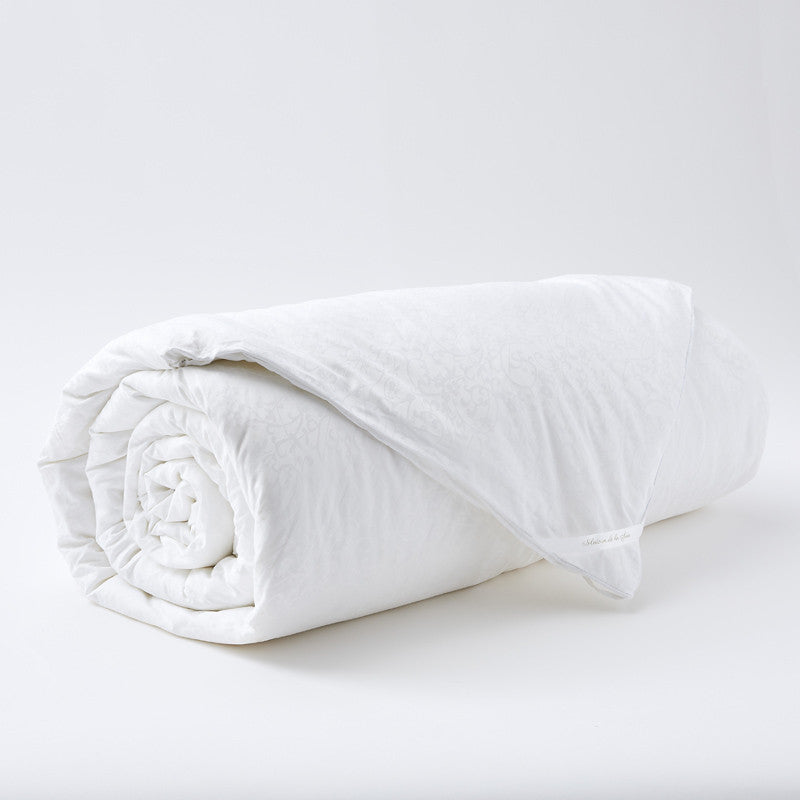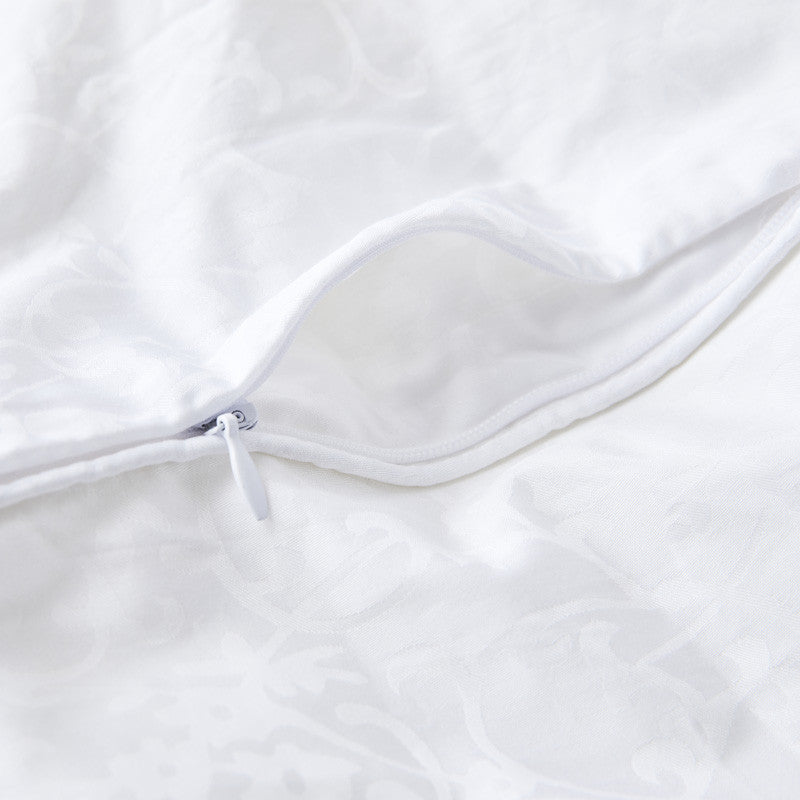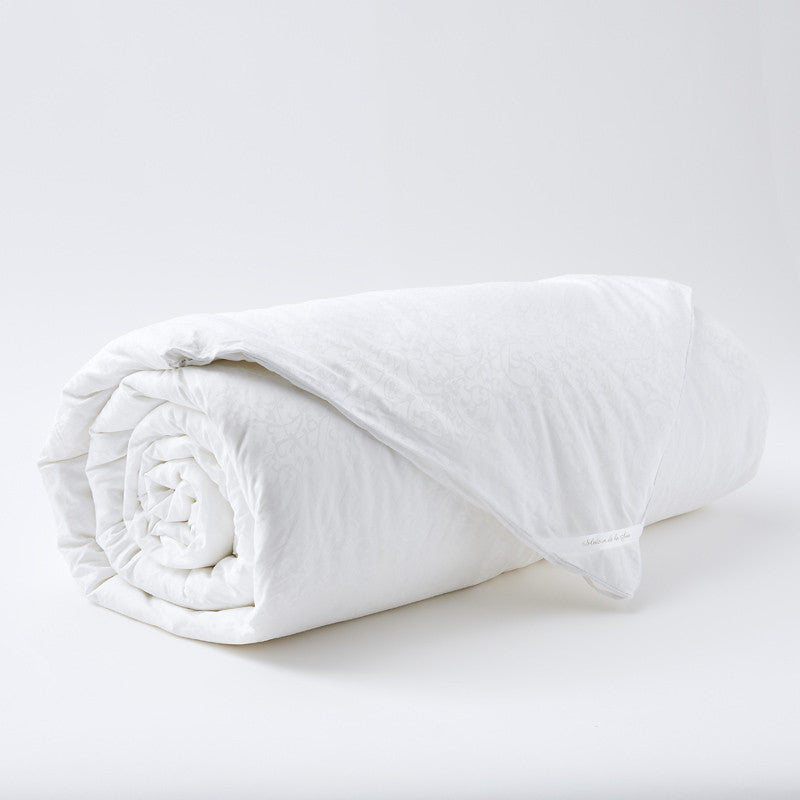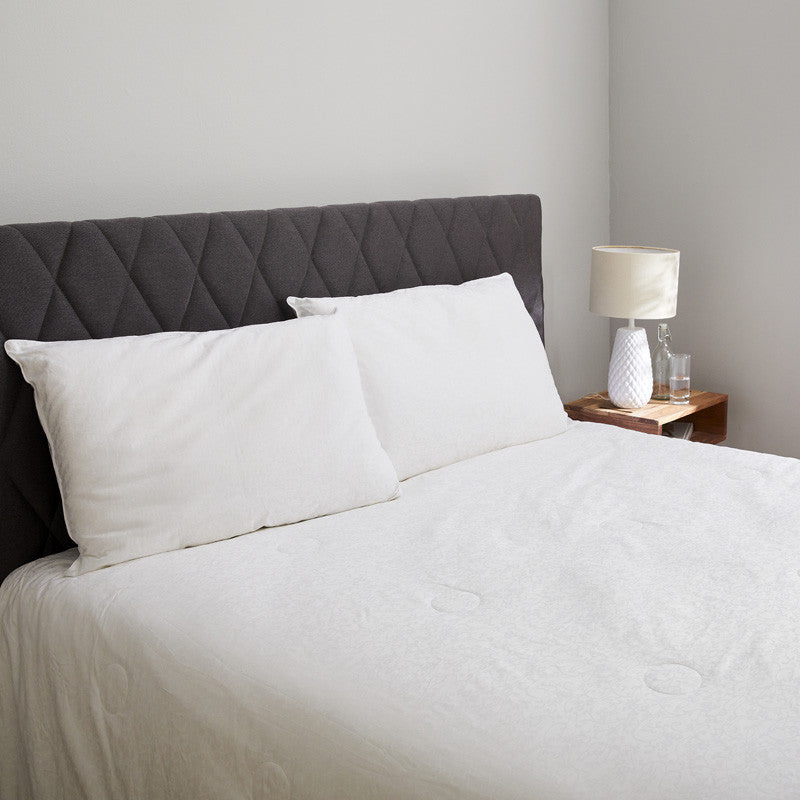When temperatures start to drop, we dread the inevitable arrival of heating bills. This year, soaring prices and energy shortages only add to these concerns. To save money, we recommend heating less. But to sleep warmly all winter long, we recommend that you equip your home properly.
Save energy: turn down the heat
Heating is the biggest consumer of household energy. According to ADEME (Agence De l'Environnement et de la Maîtrise de l'Énergie), lowering your heating by just 1°C will reduce your consumption by 7%!
Here are the temperatures recommended by the agency for ecological transition:
Living rooms: 20 to 21°C when we're present, 16 to 17°C the rest of the time
Bathroom: 22°C when we're washing, 16 to 17°C the rest of the time
Bedrooms: 17°C when we're sleeping or the room is unoccupied, 20°C if we stay in our room during the day
The ideal temperature for sleeping
To save energy, we recommend lowering the heating in bedrooms. Worried about being too cold and having trouble sleeping? Don't worry: studies show that, on the contrary, a moderate temperature contributes to quality sleep.
1. Sleep cycles
To understand how room temperature can affect sleep, let's first decipher how sleep works.
Sleep is broken down into 3 to 6 cycles, each lasting around 90 minutes. A sleep cycle comprises 2 main phases: slow-wave sleep and REM sleep. Slow wave sleep is itself made up of 3 stages: sleep onset, light sleep and deep slow wave sleep.
During the first phase of the cycle, muscle tone, eye movements and brain waves gradually diminish. Breathing becomes more regular until it slows down. Finally, body temperature drops. We then enter REM sleep. Muscle atonia, rapid eye movement (REM = Rapid Eye Movement) and high levels of brain activity, close to wakefulness, can be observed. This is when we make dreams to remember .
2. The impact of bedroom temperature on body temperature
In order not to disrupt our sleep cycles, the Institut National du Sommeil et de la Vigilance (INSV) recommends a bedroom temperature of between 16 and 18°C. Remember that a lack of sleep can have a detrimental effect on our health (weight gain, cardiovascular disease, lowered immune defenses, lack of concentration, fatigue, etc.).
According to a study published in 2012 by Japanese sleep researchers, we sleep badly when it's too hot. Heat is said to have a negative impact on deep sleep and REM sleep.
As we saw earlier, when we fall asleep, our body temperature drops and its thermoregulation diminishes at the same time.
Body temperature is strongly linked to the sleep regulation mechanism. Even for people who are not prone to insomnia, an overheated room can significantly affect their sleep.
In fact, if you overheat your room, your body will have difficulty lowering its temperature. As a result, you'll stay asleep longer, and find it harder to achieve deep sleep and REM sleep, the phases during which your body really rests.
The study also demonstrated the importance of nightwear and bedding for quality sleep. These contribute to the body's thermoregulation. The researchers compared the sleep of people partially dressed for sleep, with people dressed and sleeping with bed linen. The former group was more affected by the overheated room than the latter, as the fabrics helped maintain correct body temperature.
A silk comforter for a warm winter
So, to save energy and get quality sleep, turn down the heating and choose a warm comforter capable of regulating your body temperature.
1. The exceptional properties of silk comforters
At Maison de la Soie, our comforters are filled with long silk fibers of superior quality. In addition to being healthy, this natural material has thermoregulating properties.
Unlike other comforters, silk comforters are lightweight. So you can sleep in warmth without feeling suffocated.
Furthermore, the study cited above indicates that humidity can impair the quality of deep sleep and REM sleep. Silk limits perspiration and absorbs moisture, contributing to restful sleep.
To spend a warm winter and sleep well, we have 2 types of silk comforter. It's up to you to choose the one that suits you best.
2. The 4-season silk comforter
This consists of 2 silk comforters that are joined together to form a single, warm duvet. It's a combination of a summer comforter and a mid-season comforter. In addition to offering comfort and soft warmth, the 4-season comforter is the economical solution for sleeping with a comforter all year round.
3. The comforter winter silk
Warm and cozy, the winter silk comforter transforms your bed into a cocoon of softness. Thicker than a 4-season comforter at 500g/m2, it's perfect for chilly people and harsh winters. And if you want to save a little more energy by lowering the heating temperature by an extra degree, the winter comforter is suitable for rooms below 8°.
Sources:
INSERM (Institut National de la Santé Et de la Recherche Médicale)
Kazue Okamoto-Mizuno and Koh Mizuno, Effects of thermal environment on sleep and circadian rhythm, Journal of Physiological Anthropology, May 31, 2012 ;31(1):14. doi: 10.1186/1880-6805-31-14
The luxury of natural warmth
With their mulberry silk filling, our comforters combine natural warmth with elegance. An invitation to winter cocooning.
Choose your ideal comforter







Leave a comment